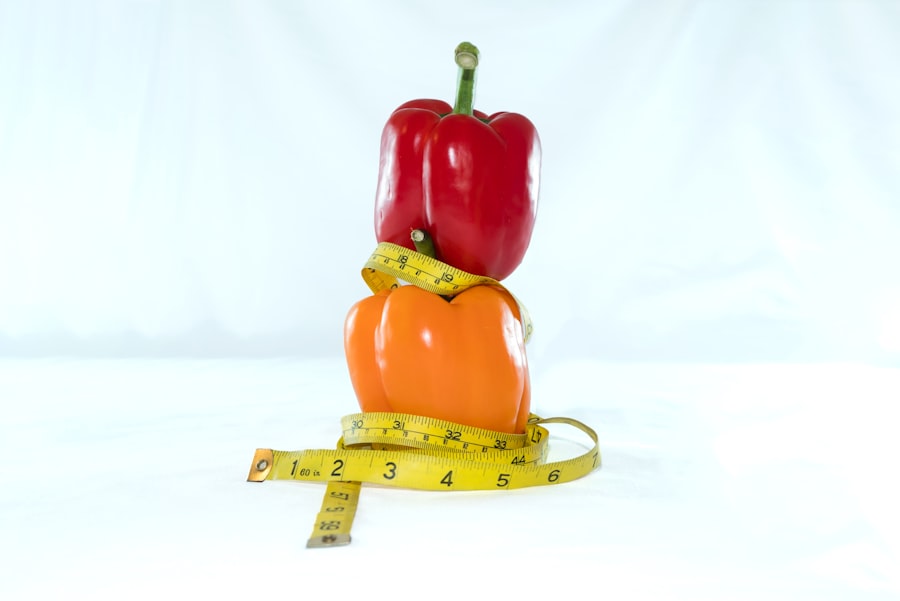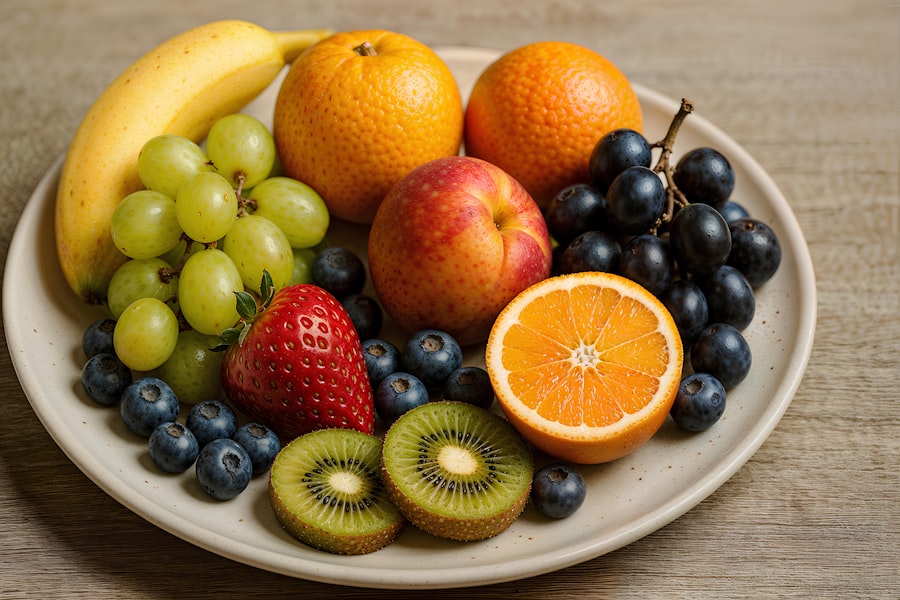Maintaining optimal blood sugar levels is crucial for overall health, particularly for individuals with diabetes or those at risk of developing the condition. Elevated blood sugar, or hyperglycemia, can lead to a myriad of health complications, including cardiovascular disease, nerve damage, kidney failure, and vision problems. The body’s ability to regulate blood sugar is vital for energy production and metabolic processes.
When blood sugar levels remain consistently high, it can result in insulin resistance, where the body’s cells become less responsive to insulin, exacerbating the problem and creating a vicious cycle. Lowering blood sugar levels is not just about preventing diabetes; it also plays a significant role in enhancing overall well-being. High blood sugar can lead to fatigue, irritability, and difficulty concentrating.
Conversely, maintaining balanced blood sugar levels can improve mood, energy levels, and cognitive function. For those who are prediabetic or have a family history of diabetes, understanding the importance of managing blood sugar is essential for long-term health. By adopting lifestyle changes that promote stable blood sugar levels, individuals can significantly reduce their risk of developing serious health issues.
Key Takeaways
- Lowering blood sugar levels is important for overall health and to prevent complications associated with diabetes.
- Diet plays a crucial role in managing blood sugar levels and can have a significant impact on overall health.
- Top 10 foods that help lower blood sugar naturally include leafy greens, berries, nuts, and whole grains.
- These foods work to lower blood sugar by providing fiber, antioxidants, and nutrients that help regulate blood sugar levels.
- Incorporating these foods into your diet and meal planning can help lower blood sugar and improve overall health.
The Role of Diet in Managing Blood Sugar
Diet plays a pivotal role in managing blood sugar levels. The foods we consume directly influence how our bodies process glucose and respond to insulin. A diet high in refined carbohydrates and sugars can lead to rapid spikes in blood sugar, while a balanced diet rich in whole foods can help maintain steady levels.
Foods that are low on the glycemic index (GI) are particularly beneficial as they are digested more slowly, resulting in gradual increases in blood sugar rather than sharp spikes. This slow digestion helps the body manage insulin more effectively. Incorporating a variety of nutrients into one’s diet is also essential for blood sugar management.
Fiber-rich foods, such as whole grains, legumes, fruits, and vegetables, not only help regulate blood sugar but also promote satiety, reducing the likelihood of overeating. Healthy fats and proteins can further stabilize blood sugar levels by slowing down the absorption of carbohydrates. Therefore, understanding the impact of dietary choices on blood sugar is fundamental for anyone looking to improve their health and prevent complications associated with high glucose levels.
Top 10 Foods That Help Lower Blood Sugar Naturally

1. **Leafy Greens**: Vegetables like spinach, kale, and Swiss chard are low in calories and carbohydrates while being rich in vitamins and minerals. Their high fiber content aids in digestion and helps regulate blood sugar levels.
2. **Berries**: Blueberries, strawberries, and raspberries are not only delicious but also packed with antioxidants and fiber. Their low glycemic index makes them an excellent choice for those looking to manage their blood sugar.
3. **Nuts**: Almonds, walnuts, and pistachios are nutrient-dense snacks that provide healthy fats and protein. They have been shown to improve insulin sensitivity and lower blood sugar levels.
4. **Fatty Fish**: Salmon, mackerel, and sardines are rich in omega-3 fatty acids, which have anti-inflammatory properties and can improve insulin sensitivity. 5.
**Whole Grains**: Foods like quinoa, brown rice, and barley are high in fiber and have a lower glycemic index compared to refined grains, making them better options for blood sugar control. 6. **Legumes**: Beans, lentils, and chickpeas are excellent sources of protein and fiber.
They help slow down carbohydrate absorption and improve overall glycemic control. 7. **Cinnamon**: This spice has been shown to enhance insulin sensitivity and lower fasting blood sugar levels when incorporated into the diet.
8. **Avocado**: Rich in healthy fats and fiber, avocados can help stabilize blood sugar levels while providing essential nutrients. 9.
**Greek Yogurt**: This dairy product is high in protein and probiotics, which can aid in digestion and improve insulin sensitivity. 10. **Sweet Potatoes**: Unlike regular potatoes, sweet potatoes have a lower glycemic index and are rich in fiber and vitamins, making them a healthier carbohydrate choice.
How These Foods Work to Lower Blood Sugar
The foods that help lower blood sugar naturally do so through various mechanisms that enhance insulin sensitivity or slow down glucose absorption. Leafy greens, for instance, are low in carbohydrates but high in fiber and essential nutrients like magnesium, which plays a role in glucose metabolism. The fiber content helps slow digestion, leading to a gradual release of glucose into the bloodstream rather than a rapid spike.
Berries contain antioxidants known as polyphenols that have been shown to improve insulin sensitivity. Their low glycemic index means they do not cause significant increases in blood sugar levels when consumed. Similarly, nuts provide healthy fats that can help reduce inflammation and improve metabolic health.
The combination of protein and fat in nuts also promotes satiety, which can prevent overeating and subsequent spikes in blood sugar. Fatty fish are rich in omega-3 fatty acids that have been linked to improved insulin sensitivity and reduced inflammation. Whole grains like quinoa contain complex carbohydrates that digest slowly, providing a steady source of energy without causing sharp increases in blood sugar.
Legumes are particularly effective due to their high fiber content; they not only slow down carbohydrate absorption but also promote gut health through their prebiotic properties.
Incorporating These Foods into Your Diet
Incorporating these beneficial foods into your diet can be both enjoyable and straightforward. One effective strategy is to start by adding leafy greens to your meals; they can be included in salads, smoothies, or as a side dish with dinner. For breakfast, consider topping Greek yogurt with berries or mixing them into oatmeal for added flavor and nutrition.
Nuts make for an excellent snack option; keeping a small portion on hand can help curb hunger between meals without causing significant spikes in blood sugar. When it comes to cooking methods, opting for grilling or steaming vegetables rather than frying can preserve their nutritional value while keeping meals healthy. Whole grains can replace refined grains in many recipes; for instance, using brown rice instead of white rice or quinoa instead of pasta can significantly enhance the nutritional profile of your meals.
Additionally, incorporating spices like cinnamon into your cooking or baking can add flavor while providing health benefits.
Tips for Meal Planning to Lower Blood Sugar

Effective meal planning is essential for managing blood sugar levels successfully. One key tip is to prepare meals ahead of time to avoid impulsive eating choices that may not align with your dietary goals. Batch cooking can be particularly useful; preparing large quantities of whole grains or legumes at the beginning of the week allows for easy incorporation into various meals throughout the week.
Another important aspect of meal planning is balancing macronutrients at each meal. Aim to include a source of protein, healthy fats, and fiber-rich carbohydrates to create a balanced plate that promotes stable blood sugar levels. For example, a meal could consist of grilled chicken (protein), avocado (healthy fat), and quinoa with roasted vegetables (fiber-rich carbohydrates).
This combination helps slow down digestion and provides sustained energy. Keeping a food diary can also be beneficial for tracking what you eat and how it affects your blood sugar levels. This practice allows you to identify patterns and make adjustments as needed.
Additionally, consider using tools like meal prep containers to portion out meals for easy access during busy days.
Other Lifestyle Changes to Support Healthy Blood Sugar Levels
Beyond dietary changes, several lifestyle modifications can support healthy blood sugar levels. Regular physical activity is one of the most effective ways to enhance insulin sensitivity and promote glucose uptake by muscle cells. Engaging in aerobic exercises such as walking, running, or cycling can significantly improve overall metabolic health.
Strength training is also beneficial; building muscle mass increases the body’s ability to utilize glucose effectively. Stress management is another critical factor in maintaining stable blood sugar levels. Chronic stress can lead to elevated cortisol levels, which may contribute to insulin resistance over time.
Incorporating relaxation techniques such as yoga, meditation, or deep-breathing exercises into your routine can help mitigate stress effects on the body. Adequate sleep is equally important; poor sleep quality has been linked to impaired glucose metabolism and increased risk of developing type 2 diabetes. Establishing a consistent sleep schedule and creating a restful sleep environment can enhance sleep quality and support overall health.
Consultation with a Healthcare Professional
While dietary changes and lifestyle modifications can significantly impact blood sugar management, consulting with a healthcare professional is essential for personalized guidance tailored to individual needs. A registered dietitian or nutritionist can provide valuable insights into creating a balanced meal plan that aligns with specific health goals while considering any underlying medical conditions. Regular check-ups with healthcare providers allow for monitoring of blood sugar levels and adjustments to treatment plans as necessary.
For individuals with diabetes or prediabetes, working closely with healthcare professionals ensures that any changes made are safe and effective. They can also provide education on how to interpret blood sugar readings and adjust dietary choices accordingly. In summary, understanding the importance of lowering blood sugar levels through diet and lifestyle changes is crucial for maintaining overall health.
By incorporating specific foods known to help regulate blood sugar and making informed lifestyle choices, individuals can take proactive steps toward achieving better health outcomes while minimizing the risk of complications associated with high blood sugar levels.
If you’re interested in learning more about managing diabetes beyond dietary choices, you might find the article on AI Breakthroughs Revolutionizing Diabetes Management for Better Health particularly insightful. This piece explores how artificial intelligence is transforming diabetes care, offering innovative solutions that complement natural dietary strategies, such as those discussed in the “Top 10 Foods That Help Lower Blood Sugar Naturally.” By integrating AI advancements with nutritional approaches, individuals can achieve more comprehensive and effective diabetes management.
FAQs
What are the top 10 foods that help lower blood sugar naturally?
The top 10 foods that help lower blood sugar naturally include leafy greens, cinnamon, eggs, chia seeds, Greek yogurt, nuts, fatty fish, turmeric, broccoli, and strawberries.
How do leafy greens help lower blood sugar?
Leafy greens such as spinach, kale, and collard greens are high in antioxidants, which may help reduce the risk of diabetes and lower blood sugar levels.
What is the role of cinnamon in lowering blood sugar?
Cinnamon has been shown to improve insulin sensitivity and lower blood sugar levels, making it a beneficial spice for those with diabetes.
How do eggs help in lowering blood sugar?
Eggs are a good source of protein and healthy fats, which can help stabilize blood sugar levels and reduce the risk of insulin resistance.
What makes chia seeds beneficial for lowering blood sugar?
Chia seeds are high in fiber and protein, which can help slow down the digestion of carbohydrates and prevent spikes in blood sugar levels.
How does Greek yogurt help in lowering blood sugar?
Greek yogurt is high in protein and low in carbohydrates, making it a good choice for managing blood sugar levels.
What role do nuts play in lowering blood sugar?
Nuts are high in healthy fats, protein, and fiber, which can help improve blood sugar control and reduce the risk of developing type 2 diabetes.
How does fatty fish help in lowering blood sugar?
Fatty fish such as salmon, mackerel, and sardines are high in omega-3 fatty acids, which have been shown to improve insulin sensitivity and reduce inflammation, leading to better blood sugar control.
What is the role of turmeric in lowering blood sugar?
Turmeric contains a compound called curcumin, which has been shown to improve insulin sensitivity and reduce blood sugar levels.
How does broccoli help in lowering blood sugar?
Broccoli is high in fiber and contains sulforaphane, a compound that may help improve blood sugar control and reduce the risk of insulin resistance.
What makes strawberries beneficial for lowering blood sugar?
Strawberries are low in carbohydrates and high in fiber and antioxidants, making them a good choice for managing blood sugar levels.
